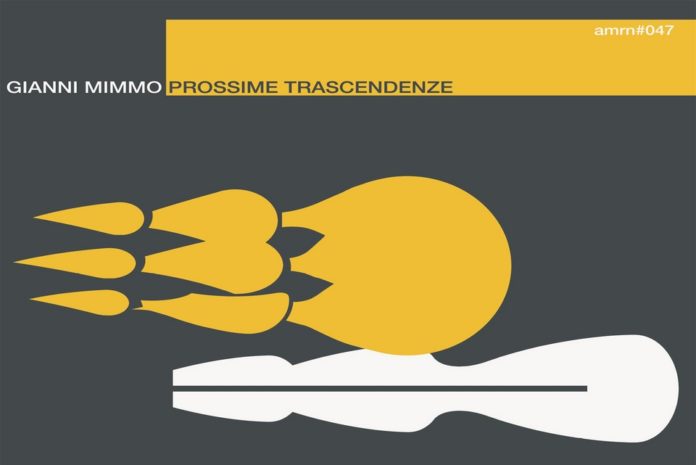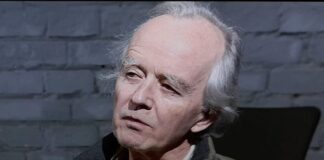It is a given that the graphic score embodies—and fosters—a creative tension between freedom and constraint. How these two values are to be balanced is among the challenges facing both composer and interpreter, and something to be negotiated concretely at the moment of realization. Although individual scores may differ in terms of the degree they explicitly specify what the performer is actually to do, all leave to the performer’s discretion significant choices as to exactly what sounds, gestures or technical resources will be used to realize them. Improvisation is an irreducible moment within the movement that brings them to life.
But what sets interpretation of the graphic score apart from pure improvisation is the way that the score compels—gently, but compels nevertheless—the performer to play something that he or she wouldn’t have played in the absence of the score. The performance, in other words, must somehow be contingent on the score, the actual shape it takes—its syntax and trajectory–being a matter of fact that would have been otherwise had no score been involved. Thus the graphic score offers the performer freedom, but a qualified freedom; in order to be effective it must condition the performer’s choices in some significant, albeit flexible way.
When successful, such conditioned freedom is the product of a fusion of sensibilities—the composer’s, who chooses the marks and distributes them on the page, and the performer’s, who interprets those same marks and realizes them as organized sounds. It may be that the composer’s function here is to provide structural limits, that is, to suggest, through elements of visual design, a way (or more likely multiple ways) of setting individual sounds into relation with each other. And the performer’s function is to grasp these limits as factors enabling, rather than preventing, the freedom needed for translating the marks into sounds. What this comes down to in practice is a certain division of labor representing complementary phases in an ongoing process. But in the end, that there can even be occasion for such a fusion is an outgrowth of the nature of the graphic score, which suggests rather than prescribes.
***
Traces, a project of Sardinian pianist-composer Silvia Corda, is a series of graphic scores that shows how organizational constraints and the performer’s conditioned choices may fruitfully interact. The composition comprises eight individual pages of similar elements laid out in a variety of ways. These elements include discontinuous fragments of Morton Feldman’s 1952 Piano Piece; three-dimensional diagrams of geometric figures; blurred architectural images; and snippets of language. These elements and their distribution across the page, suggest various interpretive strategies the performer can take up in realizing them. For example, the scattered notes and measures from Piano Piece can function as readymade phrases—played as-is or transposed–or as pitch-class sets the performer can draw on for melodic material or more abstract series. Geometric forms may suggest horizontal or vertical organization of sounds. Determining what musical parameter will be affected by what visual element in the score may depend on an initial choice made by the performer, but once made, subsequent choices will be constrained by a consistency of correspondence between mark and sound. The performer in effect agrees to limit his or her choices according to a regularity that is freely chosen yet first exists as a possibility afforded by concrete features within the score.
But within these offered constraints, the choices individual performers make are their own and reflect their own sensibilities. Musicians who have offered their interpretations—which can be heard on Soundcloud–include double bassist Adriano Orrù, Corda’s partner in life as well as in many musical projects; soprano saxophonist Gianni Mimmo; multi-instrumentalist Mauro Sambo; wind player Paolo Chagas; synthesis Gianni Lenoci; and the duo of voice artist Pat Lugo and saxophonist Marco Mal Loprieno, here on electronics. (Full disclosure: I write this as a participant rather than as an uninvolved observer, having contributed a realization for semi-prepared double bass.)
Orrù offers timbre as the pivotal variable in his realization, soliciting a range of sound colors from the instrument while holding pitch constant or while moving across registers. His creative use of bow stroke and articulation is an especially important factor in crafting his sound. Mimmo’s interpretation is a lyrical piece for two solo soprano saxophones superimposed in the studio. To this intriguing bit of auto-counterpoint a third voice is added—Mimmo’s own, reading the text that appears on the page he chose to interpret. Like Mimmo, Lugo and Loprieno use the human voice as a focal element of their interpretation. Against an open-textured electronic setting, Lugo delivers a multi-tracked soliloquy on rule and chance, geometry and structure, in Italian and English. Chagas, who elsewhere plays with Corda and Orrù in the Palimpsest Trio, overdubs reeds, flute and percussion into a pointillistic, Webern-like mosaic of instrumental colors. While the individual parts may be improvised, the piece as a whole is a deliberately composed work that wittily parallels, in its orchestration, the juxtaposition of figures and shapes on the score’s page. By contrast, Sambo’s response consists in a thickly-textured electronic piece dramatically punctuated with the sounds of clanging metal which evoke the collisions of loose objects in a resonating chamber. Lenoci’s very brief piece for solo synthesizer recalls the sensuality of sheer soundplay characteristic of early electronic music.
***
Prossime Trascendenze, a project that finds Mimmo in the role of composer as well as performer, also involves the interpretation of graphic scores. Composed between 2014 and 2015, the scores are explicitly directed toward bringing into dialogue the prescriptive and improvisational sides of graphic composition and its interpretation. In contrast to the Traces project, the majority of whose scores were interpreted by solo performers, the Prossime Trascendenze project involves interpretation by sextet and quintet.
Inviting larger groups to interpret scores that are at least partly indeterminate brings with it several challenges. Not the least of them is the multiplication, by the number of players involved, of the necessarily subjective response to the score’s notation. Such a subjective dimension is an irreducible element in any interpretation of graphic notation; when multiplied, it implies a need to somehow harmonize or fuse responses that may otherwise diverge. When realized by a group, conflict of vision is always a possibility lying latent within the situation the graphic score creates.
Mimmo addresses this situation by narrowing down and specifying certain details of the desired performance. The composer offers information on parameters such as duration, dynamics and register, while instructions on articulation, mood, pitch range, foreground-background gestalts and other variables are distributed among individual instruments within the ensemble. Mimmo has, in other words, mediated the graphic score’s inherent indeterminacy through the relational determinacy of orchestration.
The importance of orchestration, with its divisions and syntheses of instrumental timbres, is a reminder that part of Mimmo’s inspiration for these works derives from an appreciation of painterly dynamics. (The two sextet pieces are in fact named for paintings by Felice Casorati–Daphneand Donna Sdraiata, respectively.) The ensemble pieces were imagined much as paintings would be imagined—as a set of formal relationships among colors. And it is through the timbral details of orchestration Mimmo converts this conceptual grounding from imagined analogy into the concrete fact of embodied sounds.
The ensembles chosen to realize these works are both mixed groups of winds, brass and strings, with percussion appearing in the quintet interpreting 2014’s Cinque Multipli. Both sets of compositions, sensitively played on the Amirani recording released late last year, deftly exploit the interactions of instruments of similar range but dissimilar timbre. In Daphne this difference effect is woven into a quasi-fugal overlapping of long lines—in its deliberate unfolding and gradual addition of voices it recalls Bach’s Musikalishes Opfer—whereas The Nestled Thought works more on a divisionist principle by separating out the instruments into solo events of pure color. The five pieces of Cinque Multipli (2015) push Nestled Thought’s divisionism one step further into an open-textured, Webern-like pointillism. If for the two sextets color is a function of line, here it is a matter of phrasing, of disparate timbres complementing and completing each other’s statements. Much of Cinque Multipli’s success hinges on Mimmo’s deft management of figure-ground relationships and his ability to maintain movement between and within dynamic and dynamically shifting instrumental subunits.
***
Both Corda’s Traces and Mimmo’s Prossime Trascendenze elicit realizations that preserve the distinctiveness of the interpreters’ individual voices while at the same time maintaining the conditions their scores set out, to differing degrees of specificity. Mimmo’s scores, which structure the direction and movement of group and individual actions, provide more explicit guidance in regard to which performers make local decisions, while Corda’s Traces allow the performer to make structural as well as local decisions. But both projects entail the internalization, assimilation and ultimately the translation into the performer’s language of the composer’s intention, as notated in the score. Exactly how that process of translation works in any given case may have to remain something of an opacity, consisting as it does in a moment of interiority perched at the edge of projecting outward. However it may work, though, in the end what we hear is the sum of an ongoing process of reciprocal appropriation in which both performer and composer—the former through those concrete choices, the latter by creating a situation in which choices are made possible—forge a synthetic unity that is the actual performance.











